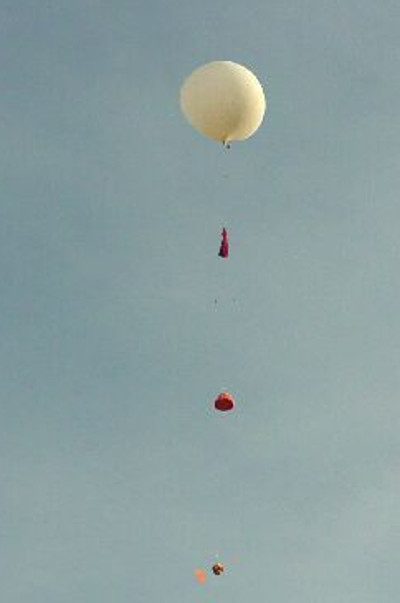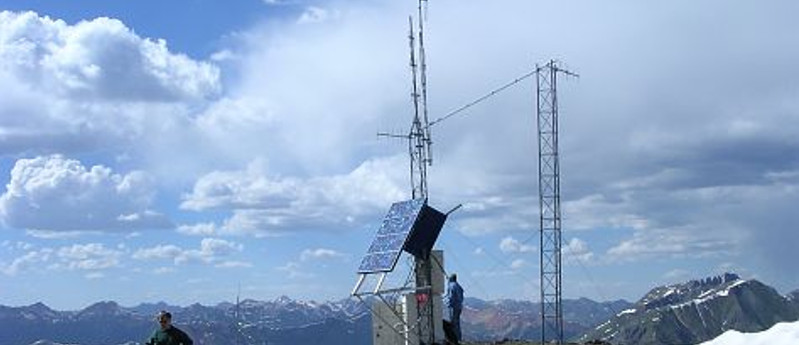Ever been out in a big field and need to tell something to Joe at the other end? If you’re lucky Sally is in between and you can shout to Sally to tell Joe your message. Maybe Joe shouts back to Sally in reply.
That’s how amateur radio repeaters work.
Friend of Hackaday [Kenneth Finnegan] got tired of explaining the details of repeaters so he put together a pair of repeater tutorial videos, the first of which is found after the break.

The higher radio frequencies, say 50 MHz and above, typically only propagate within line of sight. Add in limited power and antennas from a hand-held, typically under 5 watts and the ubiquitous ‘rubber ducky’ antenna, and you cannot talk very far. Mobile rigs in vehicles with 50 watts and larger antennas do better but in reality they don’t help all that much.
What really makes an improvement is height to improve range. Height provides a longer line of sight with fewer obstructions. Hams created repeaters and put them on towers, buildings or hill tops to expand the radio horizon. The ultimate repeaters are space satellites. Can’t get much higher than that. A close second are balloons going to near space altitudes with repeaters which will provide multi-state coverage.
Besides providing height, a repeater will also have higher output power and much better antennas, especially important for receiving weak signals from distant handhelds. A signal comes in and is repeated back out on a slightly different frequency. All modern ham gear on these frequencies is setup to handle this offset frequency operation.
Whether hams came up with the idea is arguable, but they were certainly there during the early days.
















“a repeater will also have higher output power”
This is seldom true. Most VHF repeaters (around here anyway) have an RF output between 10 and 25 watts, significantly less than most mobile radios. Some put out as little as 5 watts! There are exceptions to this, of course, but most repeaters are designed to only transmit about as far as they can receive (you don’t want people to be able to hear the repeater but not be heard by it).
The performance of a repeater is determined more by it’s height above the surrounding area and the quality of its antenna or antennas, than by its output power.
Good article otherwise. I’m always glad to see amateur radio related articles on Hack-A-Day. Please keep ’em coming.
Where i’m at, we’ve got repeaters(VHF) up in the air that cover a good 30 miles in all directions, some a bit more, towers are up around 500 feet(piggy backed on commercial towers), power is about 80 watts for most of them, and they can hear a 5 watt HT on a rubber duck at their fringe. We’ve got a couple of “smaller” repeaters, 50 feet up, 30-50 watts, still get a decent 10 miles out of them on UHF. All repeaters are, pending any problems that occasionally pop up, able to talk and listen to the same distance.
Everywhere is different, apparently. Here in central NH we have a ton of hills to deal with, so good spots on the highest ones (especially ones with towers) are highly coveted. The towers typically range from 50 to 100 feet, but the area’s best repeater has its antenna only a few feet higher than the roof of the building it’s mounted on. It also only puts out 20 – 25 watts, but has an enormous coverage area.
Deep South Texas – Rio Grande Valley, Very Very flat area, at or just below sea-level (find the southern most 4 counties in Texas), our towers down here go from a 10 ft chunk of EMT for testing up to 1000 ft commercial towers for our VHF Hub repeater(Hub is centrally located, ties in a couple other VHF Repeaters by way of UHF Links). The other repeaters are all lower and with that have less coverage.
An Aside back to the Article itself, it would have been interesting to see what Hackaday’s range guesstimate would be for VHF and above at 5 watts. That Hub repeater of ours had some wicked ears, could pickup my 5 watt Ham Band VHF HT from approximately 25 miles as the crow flies with little to no noise on the re-transmitted signal(obviously an advantage of a good receive antenna and the altitude).
“Mobile rigs in vehicles with 50 watts and larger antennas do better but in reality they don’t help all that much.” – I wonder then why I can get much better range simplex going mobile to mobile than HT to HT, wire it in as a base station with a properly set coax/ antenna pairing, range goes further, change your transmit mode, and utilize the magic of skip and you can go all over the place (unintentional skip will get us ~200 miles on a good day)
Agreed about mobile rigs being an improvement over HTs. The ham radio club I’m in provides communications for a number of events every year, and we often get to see first hand the difference between mobiles and HTs. A number of the guys around here actually set their mobile rigs up as cross-band repeaters so that they can use their handhelds on site but still maintain communications with net control.
I guess there’s no one way to do things in amateur radio. We all just need to utilize whatever methods work for our individual situations.
The power requirements will be different depending on location. Here in East Texas we are in the “Piney Woods”, i.e. heavy pine forests. Pine needles here are exactly the right wavelength to absorb 70 cm signals. They attenuate 2m pretty well, also. I’ve been in locations where moving 10 feet can make a difference in getting a signal into the repeater or not. Once my fender mounted antenna wouldn’t work but I put a mag mount on the raised tailgate of my Explorer and that worked.
Funny story. We do a lot of bike rides and races north of here that go into a national forest. The cell phone coverage is really bad up there. A national group came in to do an event and early on we contacted them about covering the national forest for them. They declined our offer planning to you those cell phones with the ‘walkie talkie’ kludge. Ten days before the even they came asking us to provide coverage. To add insult, they found that one of their rest stops was in a ‘hole’ and we needed to move someone to provide communications. We were thin on the ground that year with only 10 days notice. Since then we’ve been out full force to support them.
We have had very similar results here in NH, both in terms of foliage affecting radio and people thinking that cell coverage is good enough, which it never is.
We see a sharp drop in coverage distance on 2m once the trees start budding here in spring, and the reverse happens though more slowly come fall when the trees start shedding their colorful RF filters.
Noble idea, which reality got distorted into making the service they offered unusable when some idiot decided to block the listening channel.
Seriously, every time I was tempted to use 2m repeaters for voice whilst operating mobile in the UK the frequency was blocked by some idiot playing music over the repeater and swearing at a bunch of hams who instead of ignoring him (sorry ladies, not being sexist but it was always a male idiot in my recollection) were engaging and feeding the troll.
There was little point triangulating the idiot and reporting them because the dti who were responsible for policing the band legally weren’t interested unless they interfered with commercial radio services.
ATV repeaters are a different scenario, I was involved writing animated testcard demo’s to run on amiga’s up the pole for between transmission bursts when idle.
Sounds like it might be a local issue in your, though that sort of douche-baggery does occur from time to time everywhere. Here in the US the FCC takes intentional interference issues seriously, so the LIDs that pull that crap usually get what they deserve in the form of stiff fines and equipment seizure.
Issuing stiff fines looks good on paper but how often is the FCC successful in collecting those fines from the ne’er do wells that cause problems on the amateur bands? From what I understand, the Department of Justice has to bring a lawsuit against those that have been issued a fine to get them to pay up. I’d imagine that dealing with people issued fines for causing problems on the amateur bands is low on the DOJ’s priority list.
At least there’s a paper trail, so that other hams know who’s door to knock, baseball bats in hand, on when those idiots try it again. (kidding)
I think the FCC is really serious about this because some guy interfering with hams might decide to do it with police or commercial radios. They do impose fines and we see reports that they negotiate settlements.
The other thing the FCC can do is take the equipment away.
Hams do keep the pressure on the FCC to go after the squirrels.